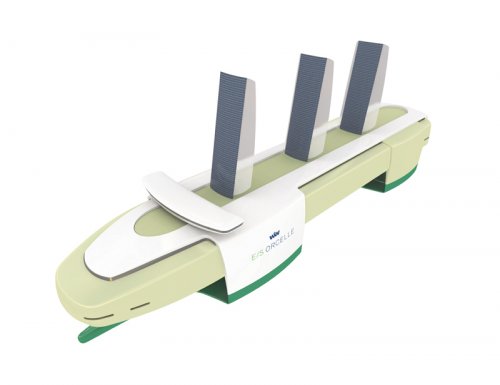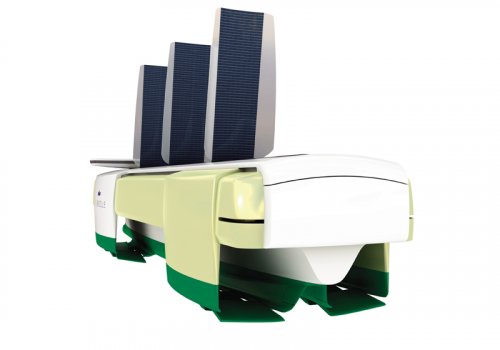The E/S Orcelle, Wallenius Wilhelmsen's vision of a zero emission 10,000 vehicle RO/RO ship for the year 2025.
http://www.ens-newswire.com/ens/apr2005/2005-04-06-03.aspSun, Wind, Fuel Cells Power Cargo Ship of the Future
AICHI, Japan, April 6, 2005 (ENS) - A cargo ship designed to run exclusively on renewable energy is making its debut in the Nordic Pavilion at the World Expo 2005. It harnesses the power of the sun, wind and water and releases zero emissions into the environment.
A concept model of the E/S Orcelle, a cargo ship designed by the Scandinavian shipping company, Wallenius Wilhelmsen, is on display in the Nordic Pavilion. E/S stands for Environmentally sound Ship.
Designed for a future with declining supplies of fossil fuels and increasing environmental responsibility, the concept vessel would have a capacity of 10,000 standard cars and would use only renewable energy sources and naturally-charged fuel cells for power.
Wallenius Wilhelmsen CEO Nils Dyvik said, "The future is here in our vision of the environmentally friendly ship. While futuristic in its concept we believe that E/S Orcelle represents the achievable goal of building a zero emission cargo ship."
The innovative vessel is named in honor of the Irrawaddy dolphin, known in French as the Orcelle dolphin, currently high on the endangered species list of WWF, the global conservation organization.
Dyvik said, "Wallenius Wilhelmsen is determined to be at the forefront of these efforts as our three year sponsorship of WWF-International to help protect and reserve marine life on the high seas demonstrates.”
The ship's design incorporates a cargo deck area equivalent to 14 football fields. Three giant rigid sails manufactured of special lightweight composite materials are covered in solar panels to help drive the ship at its cruising speed of 15 knots.
Wave power is utilized through a series of 12 fins, which will be able to transform wave energy into hydrogen, electricity or mechanical energy. The fins double as propulsion units, driven either by wave energy or other renewable energy sources onboard.
The Orcelle is also powered by two variable-speed electric propulsion systems known as pods. This propulsion system eliminates the traditional stern propeller and rudder arrangement.
Around half the energy on the E/S Orcelle will be produced by fuel cells, a rapidly developing new technology. These cells will combine hydrogen and oxygen to generate the electricity which will be used in the pod propulsion systems and the fins, while also producing electricity for other uses onboard. The only by-products from this process are water vapor and heat.
The ship's hull is a pentamaran, a new design concept in trans-ocean shipping. The design consists of a wave-piercing slender hull fitted with four outriggers for added stability in heavy seas.
"Besides picking up wind energy, its large sails generate electricity using solar cells fitted to their entire surface. A system of horizontal fins will also make use of wave energy," explains Per Brinchmann, a naval architect with Barber Marine Consultants.
"Built as a pentamaran, the E/S Orcelle's main hull and four sponsons provide stability and eliminate the need for ballast water, another key environmental concern," said Brinchmann.
Ballast water is taken on or released by ships to level their cargo loads. It is the main method of transport for invasive aquatic species that are picked up in ballast water in one part of the world and dumped in a different region where those species may have no natural predators.
Cargo carrying capacity has been optimized, so that the Orcelle could carry approximately 10,000 cars - around 50 percent more than today’s car carriers - while having a similar weight in tonnage terms.
This increased level of efficiency has been achieved through the use of lightweight materials, including aluminium and thermoplastic composites, and also by eliminating the need for ballast water tanks.
“We believe that the shipping industry as a whole must put more effort into developing sustainable deep sea transportation solutions," said Dyvik.
The company has no immediate plans to build a prototype of the E/S Orcelle. But Dyvik says the company will continue to work with others to develop the technologies embodied within the concept design, so that they do become practical options for car carriers within the next 20 years.
"We saw the opportunity to present our vision for the year 2025 in the shape of a concept car carrier, Dyvik said. "Although a carrier like this will never be built in entirety, we hope to see its elements in future vessels."
Jointly owned by Wallenius Lines of Sweden and Wilhelmsen of Norway, Wallenius Wilhelmsen is a global specialist in ocean, inland and outbound supply solutions. The company has around 60 modern vessels, carries 1.7 million vehicles by sea and 1.5 million by road.
Attachments
-
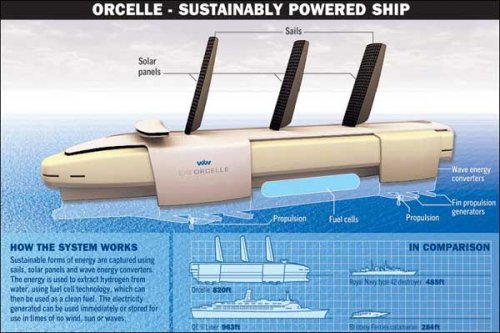 Image_412_Orcelle_fuelcellroro600399.jpg37.8 KB · Views: 51
Image_412_Orcelle_fuelcellroro600399.jpg37.8 KB · Views: 51 -
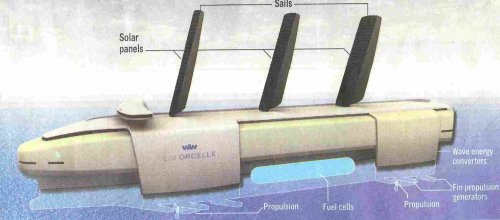 solar_transporter_ship_orcelle.jpg41.2 KB · Views: 31
solar_transporter_ship_orcelle.jpg41.2 KB · Views: 31 -
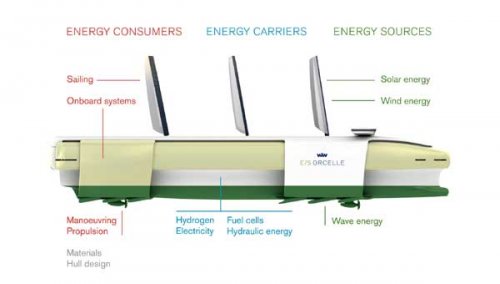 Image_414_ORCELLESideView600340.jpg14.3 KB · Views: 34
Image_414_ORCELLESideView600340.jpg14.3 KB · Views: 34 -
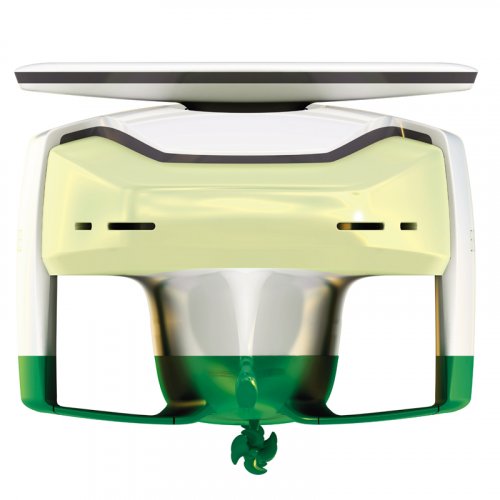 1344848888_44e0e88300_o.jpg199.1 KB · Views: 24
1344848888_44e0e88300_o.jpg199.1 KB · Views: 24 -
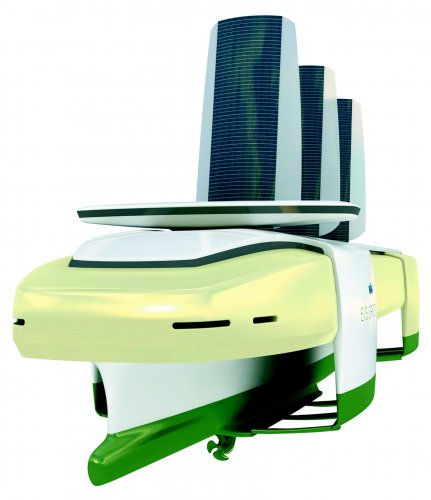 mj20050301_17.jpg607.7 KB · Views: 26
mj20050301_17.jpg607.7 KB · Views: 26 -
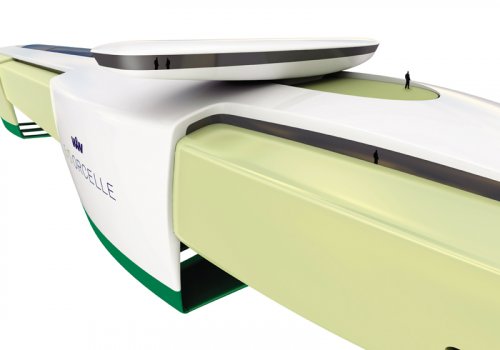 1344848554_3646226b8a_o.jpg147.3 KB · Views: 16
1344848554_3646226b8a_o.jpg147.3 KB · Views: 16

